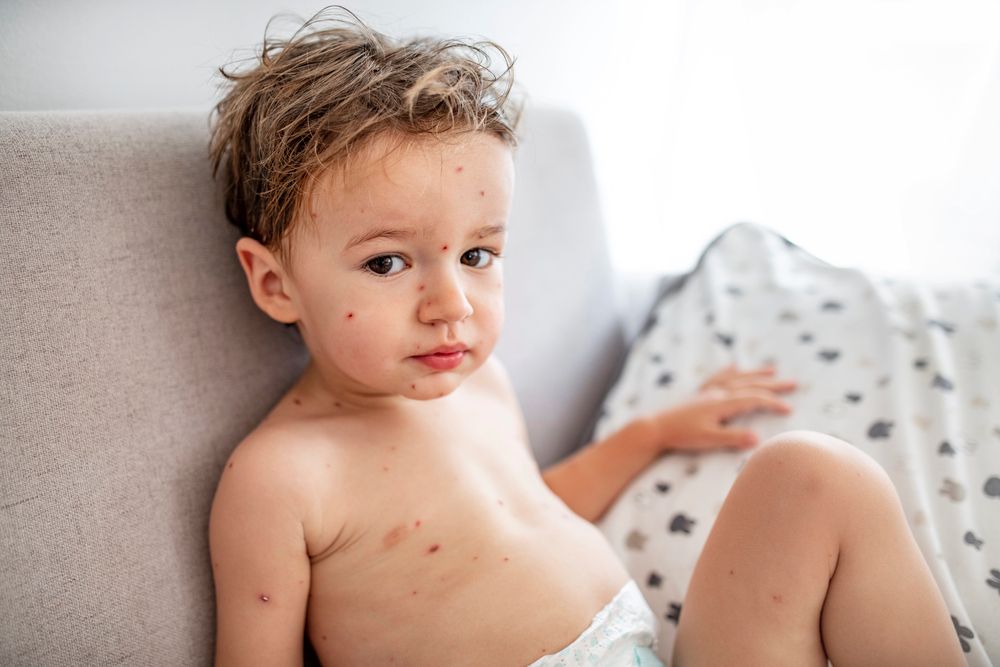Chickenpox: Symptoms, Causes, Treatment, and Complication

Chickenpox is an infection that can be extremely unpleasant and uncomfortable—and in rare cases, even life-threatening. Caused by the varicella-zoster virus, chickenpox has an incubation period of 10 to 21 days and is highly contagious. It spreads in much the same way as the common cold—through airborne droplets when an infected person coughs or sneezes, or through direct contact with the fluid from chickenpox blisters.
While chickenpox is often seen as a childhood illness, it can affect people of all ages. Thanks to widespread vaccination, cases are now far less common in countries like Australia—but outbreaks do still happen.
Symptoms of Chickenpox
Chickenpox is usually easy to diagnose by medical professionals due to its trademark rash of red spots that may blister. However, several symptoms commonly occur before the rash becomes visible:
- Fever
- Muscle aches
- Headache
- Nausea
- Loss of appetite
- Tiredness and irritability
These flu-like symptoms can last a day or two before the skin rash appears.
The Rash Lifecycle
The rash will generally last between 1-2 weeks, during which the patient should self-isolate to avoid infecting others. The rash can range in severity from a few small patches to one covering most of the skin surface.
The rash usually develops in stages and can vary in severity—from a few small patches to widespread coverage across the entire body. The rash most commonly appears on the:
- Stomach
- Chest
- Face
- Limbs
Stages of the Chickenpox Rash
- 1. Red spots (papules) – small, itchy bumps that emerge in clusters
- 2. Fluid-filled blisters (vesicles) – form over the red spots within about 24 hours
- 3. Clouding and crusting – blisters become cloudy, rupture, and form scabs
- 4. Healing – the scabs fall off naturally over the next 7–10 days
It’s common for new spots to appear over several days, so patients may have all rash stages on their skin at the same time.
Managing Discomfort
The itching can be intense, especially as blisters form. To reduce discomfort:
- – Avoid scratching (to prevent scarring and secondary infections)
- – Apply calamine lotion or take oatmeal baths
- – Wear loose-fitting, breathable clothing
- – Keep fingernails short and clean
Most healthy people with typical symptoms can recover without medical intervention by resting and drinking plenty of fluids. However, some individuals can have more severe symptoms like especially painful blisters or difficulties with breathing. In these situations, a medical professional should be engaged.
How Does Chickenpox Spread
Chickenpox is highly contagious from 1–2 days before the rash appears until all the blisters have crusted over—usually about 5 to 7 days after the first spots show.
The virus spreads through:
- – Airborne droplets from coughs or sneezes
- – Direct contact with fluid from blisters
- – Contact with contaminated surfaces
Because it spreads so easily, children with chickenpox should remain at home and avoid school or daycare until fully recovered.
Treatments
Most healthy people can recover from chicken pox at home within 1 to 2 weeks. However, those struggling with the symptoms can reduce the discomfort they feel in a variety of ways.
Do:
- Take paracetamol (acetaminophen) to relieve fever and aches
- Drink plenty of fluids to prevent dehydration
- Rest as much as needed
- Eat soft, bland foods if blisters are present in the mouth
Don't:
- Avoid aspirin, as it increases the risk of Reye’s syndrome, a rare but serious condition
- Don’t scratch the rash—even if it feels soothing temporarily, it can lead to permanent scars or infections
- Avoid spicy, salty, or acidic foods if mouth sores are present
For some, antiviral medications may be prescribed, especially if symptoms are severe or the patient is at higher risk (e.g. adults, pregnant women, or those with weakened immune systems).
Complications
Although chickenpox is usually mild, complications can occur, particularly in:
- – Adults
- – Pregnant women
- – Newborns
- – People with compromised immune systems
Potential complications include:
- Bacterial skin infections from scratched blisters
- Pneumonia
- Encephalitis (inflammation of the brain)
- Sepsis
- Reye’s syndrome (if aspirin is used in children)
- Dehydration
If you or your child experiences difficulty breathing, a high fever, or signs of infection in the rash (redness, swelling, or pus), it’s important to seek medical care promptly.
Vaccination and Prevention
There is a chickenpox vaccine available and it’s part of the standard immunisation schedule in Australia. The vaccine is highly effective in preventing chickenpox—or, if infection still occurs, in significantly reducing the severity of the illness.
Vaccination schedule in Australia
- – First dose: 18 months of age (as part of the MMRV vaccine)
- – Catch-up doses available for older children, teenagers, and adults who haven’t had chickenpox or been vaccinated
The vaccine is also recommended for:
- – Adults without immunity who work with children or in healthcare
- – Women planning pregnancy (but should not be given during pregnancy)
- – Close contacts of immunocompromised individuals
Vaccination not only protects the individual but also helps reduce the spread of the virus in the community through herd immunity.
Chickenpox vs. Shingles
After recovering from chickenpox, the varicella-zoster virus remains dormant in your body. Years later, it can reactivate as shingles—a painful, blistering rash that typically appears on one side of the body.
While shingles itself is not chickenpox, it can cause chickenpox in others who have never had it or been vaccinated. That’s why it’s important to avoid contact with vulnerable people if you have an active shingles outbreak.
When to See a Doctor
- The person with chickenpox is an adult, newborn, pregnant, or immunocompromised
- The rash spreads to the eyes
- The fever lasts longer than 4 days
- The blisters become infected
- The patient shows signs of dehydration or breathing difficulty
Telehealth services can be a convenient way to get professional advice without leaving home—particularly if you’re self-isolating.
Final Thoughts
Chickenpox is a common viral illness that most people recover from without complications. However, it can cause significant discomfort and, in some cases, serious health issues. The best defence is prevention through vaccination, along with good home care and avoiding contact with others while contagious.
If you or your child develops symptoms of chickenpox, monitor them closely, avoid scratching, and speak with a healthcare provider if you have any concerns.



